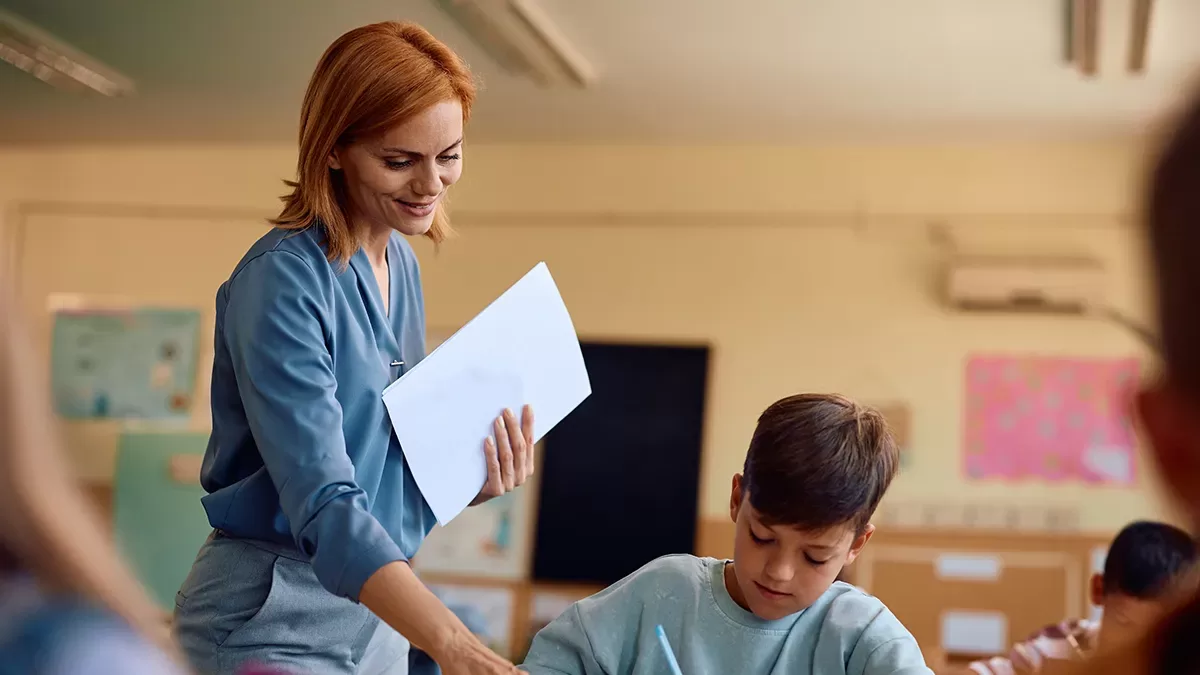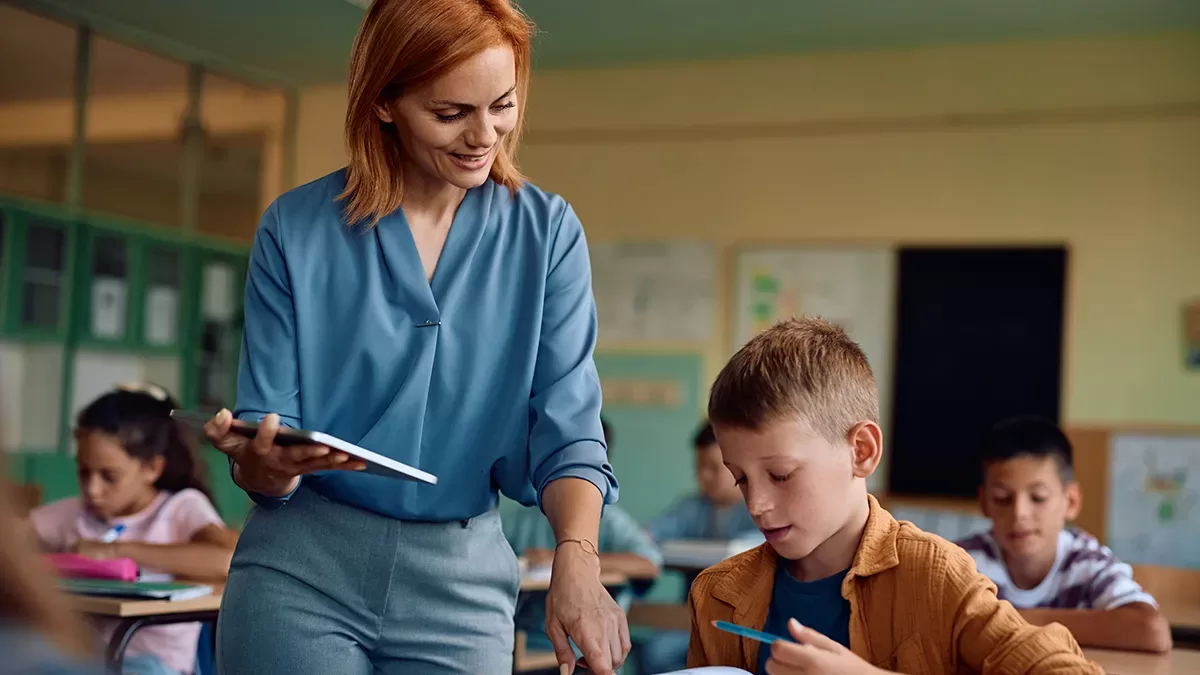Table of Contents
- Develop Clear and Transparent Policies
- Use a Secure Technology Platforms
- Provide Training on Privacy and Ethical Practices
- Build a Culture of Trust
- Address Legal and Ethical Obligations
- Use a Secure Storage and Access System
- Communicate Regularly About Privacy Protections
- Empower Teachers to Lead Privacy Initiatives
- Conclusion: Prioritizing Privacy Builds Confidence
One of the most common reasons teachers resist videotaping themselves is concern about privacy. Teachers may worry about how their videos will be used, who will see them, or whether the recordings could be taken out of context. Addressing these concerns with clear policies, ethical practices, and effective communication is crucial for building trust.
Research on technology adoption and organizational change highlights that creating a safe environment with well-defined boundaries significantly increases participation (Ertmer & Ottenbreit-Leftwich, 2010; Edmondson, 1999). Here is a comprehensive, research-informed approach to protecting privacy and overcoming resistance to videotaping.
1. Develop Clear and Transparent Policies
Teachers need to know how their videos will be used, stored, and shared to feel secure about participating in videotaping initiatives.
Steps:
Define Purpose: Clearly communicate that videos are for professional growth, not evaluation. Include this purpose in written policies shared with all staff.
Set Usage Limits: Specify who can access the videos (e.g., only the teacher, instructional coach, or designated reviewers) and for what purpose. Explicitly prohibit unauthorized use or sharing. In Vosaic, videos can not be shared outside of the platform.
Draft Consent Agreements: Require teachers, students, and parents to sign consent forms that outline how recordings will be used and protected.
Include Teachers in Policy Creation: Involve teachers in developing privacy policies to ensure their concerns are addressed and to build ownership of the process.
Evidence: Transparency in organizational policies fosters trust and reduces resistance to new practices, as shown in Kotter’s Change Management Model (1996).
2. Use Secure Technology Platforms
Selecting the right video platform is critical for ensuring privacy and minimizing technical vulnerabilities.
Steps:
Choose a Secure Tool: Use platforms like Vosaic, which allow teachers to record, store, and analyze videos in a secure environment. Vosaic’s platform ensures that teachers retain full control over their recordings.
Enable Access Controls: Ensure the platform allows teachers to determine who can view, comment on, or download their videos.
Implement Encryption: Ensure that video files are encrypted both during transmission and while stored on the platform to protect against unauthorized access. Vosaic requires encrypted transmission and all data is encrypted at rest.
Evidence: Studies on data security (Furht & Escalante, 2010) emphasize the importance of encryption and access controls in protecting sensitive information.
3. Provide Training on Privacy and Ethical Practices
Teachers may not fully understand how privacy will be maintained, which can exacerbate their concerns. Training can demystify the process and build confidence.
Steps:
Explain Privacy Features: Train teachers on how to use the privacy controls within the video platform, such as setting passwords or restricting access.
Discuss Ethical Guidelines: Provide examples of acceptable and unacceptable uses of video, such as how to handle student data responsibly.
Address Student Privacy: Teach teachers how to obtain student and parent consent, and how to avoid capturing sensitive information in recordings (e.g., personal identifiers or off-topic conversations).
Evidence: Teachers who feel informed about data security are more likely to adopt technology, as shown in research on teacher perceptions of technology use (Tripp & Rich, 2012).
4. Build a Culture of Trust
Privacy concerns often stem from a lack of trust in how recordings will be handled. Cultivating a trust-based culture can significantly reduce these concerns.
Steps:
Model Responsible Behavior: Leaders and coaches should use video in a way that respects privacy, such as anonymizing student data and obtaining consent before sharing examples.
Use Videos for Coaching, Not Evaluation: Make it clear that videos will not be used for punitive measures or performance evaluations. Establish boundaries to separate coaching initiatives from formal evaluations.
Recognize Teacher Autonomy: Allow teachers to control how and when their videos are shared, giving them the option to delete recordings if desired.
Normalize Ethical Practices: Frequently highlight examples of teachers successfully using video for growth while maintaining privacy.
Evidence: Psychological safety, a concept introduced by Edmondson (1999), is essential for fostering a culture of trust, which encourages risk-taking and innovation.
5. Address Legal and Ethical Obligations
Districts must comply with laws like the Family Educational Rights and Privacy Act (FERPA) and ensure ethical practices in video use.
Steps:
Consult Legal Experts: Work with legal counsel to ensure video practices comply with FERPA, state privacy laws, and district policies.
Clarify FERPA’s Role: Educate staff about how FERPA applies to video recordings, such as whether videos are considered part of students’ educational records.
Provide Templates for Consent Forms: Standardize the consent process for teachers, students, and parents, making it easy to document permissions.
Include Privacy in Professional Development: Incorporate legal and ethical considerations into all video-related training sessions.
Evidence: Compliance with legal standards is critical for protecting districts from liability and fostering teacher confidence, as outlined by U.S. Department of Education.
Stay on Top of Important Discoveries
We read case studies and academic journals so you don’t have to. Sign up and we’ll send you the key takeaways.
6. Use a Secure Storage and Access System
Where and how videos are stored is a key component of privacy protection.
Steps:
Centralize Video Storage: Use a secure, centralized system for storing videos rather than allowing files to remain on personal devices. All videos uploaded to Vosaic are securely stored, backed up, and encrypted.
Set Retention Policies: Define how long videos will be stored and when they will be deleted. For instance, set a six-month retention period unless the teacher opts to extend it. In Vosaic, you have full control over deleting videos.
Track Access: Monitor who views, shares, or downloads videos, creating accountability for access. In Vosaic, you can see with whom the videos have been shared and the last access dates.
Evidence: Centralized and secure data storage is a best practice in data protection, as noted in Furht & Escalante (2010).
7. Communicate Regularly About Privacy Protections
Ongoing communication helps reinforce trust and clarify evolving policies or practices.
Steps:
Hold Regular Briefings: Update teachers on any changes to privacy policies, technology platforms, or legal guidelines.
Create a FAQ Document: Address common questions and concerns about video privacy in a resource that teachers can access anytime.
Encourage Feedback: Solicit input from teachers about privacy practices, using their feedback to refine policies and processes.
Evidence: Open communication is key to addressing employee concerns during change initiatives, as shown in Kotter’s Change Management Model (1996).
8. Empower Teachers to Lead Privacy Initiatives
Giving teachers a voice in how privacy is managed can increase their buy-in and alleviate concerns.
Steps:
Form a Privacy Committee: Include teachers, administrators, and IT staff to oversee video privacy policies and ensure they align with teachers’ needs.
Highlight Teacher Advocates: Recognize teachers who effectively use video while protecting privacy, positioning them as resources for their peers.
Encourage Teacher-Led Workshops: Allow teachers to lead sessions on privacy best practices, creating a peer-driven approach to video use.
Evidence: Empowerment increases ownership and reduces resistance, as shown in studies on participatory leadership (Bass & Riggio, 2006).
Conclusion: Prioritizing Privacy Builds Confidence
Protecting privacy is a critical step in helping teachers overcome resistance to videotaping. By implementing clear policies, leveraging secure platforms like Vosaic, providing robust training, and fostering a culture of trust, districts can alleviate concerns and create a safe environment for professional growth.
Research underscores that when teachers feel their privacy is respected, they are far more likely to engage with video as a tool for reflection and improvement (Tripp & Rich, 2012; Edmondson, 1999). With these protections in place, districts can unlock the transformative potential of video for teaching and learning.



